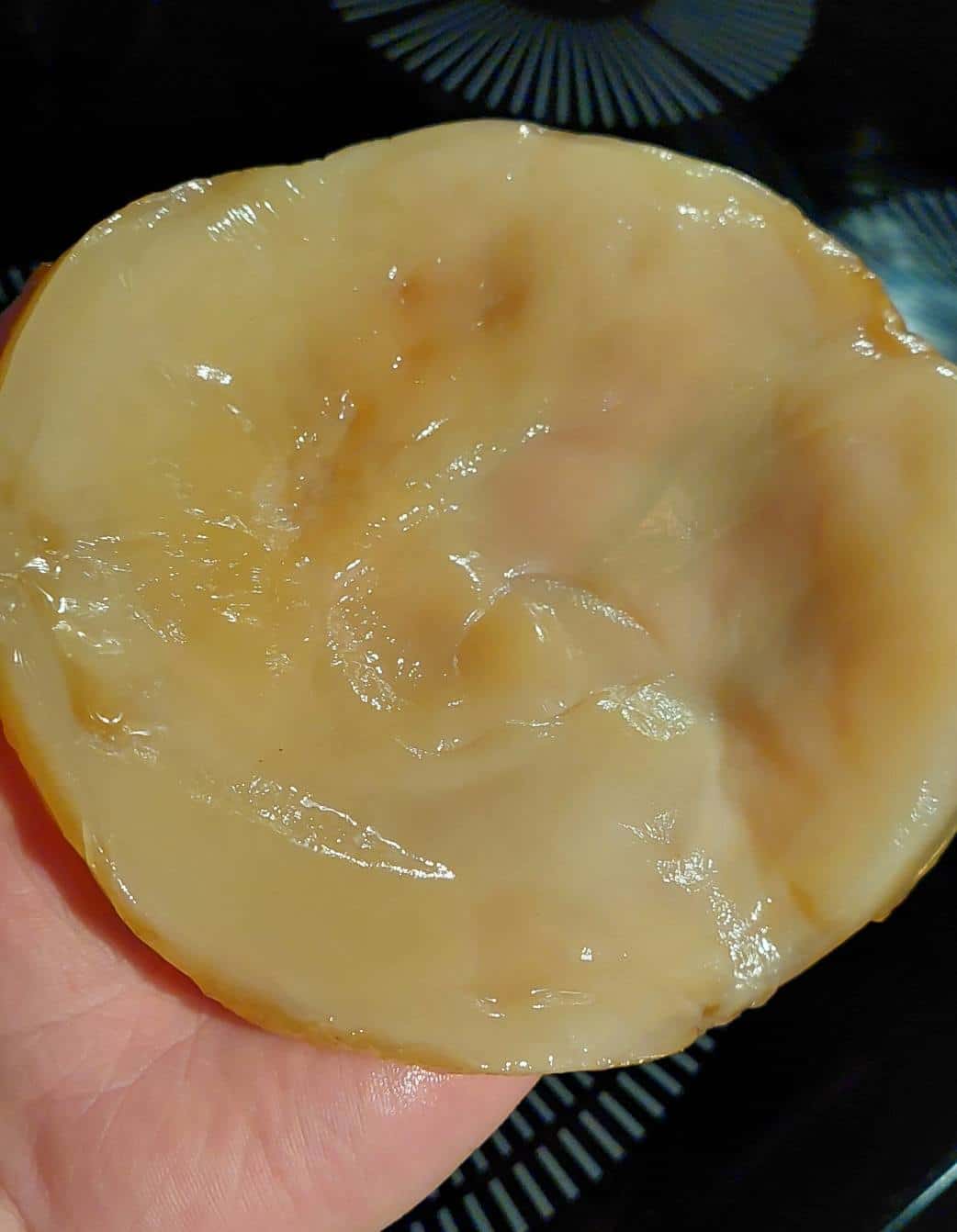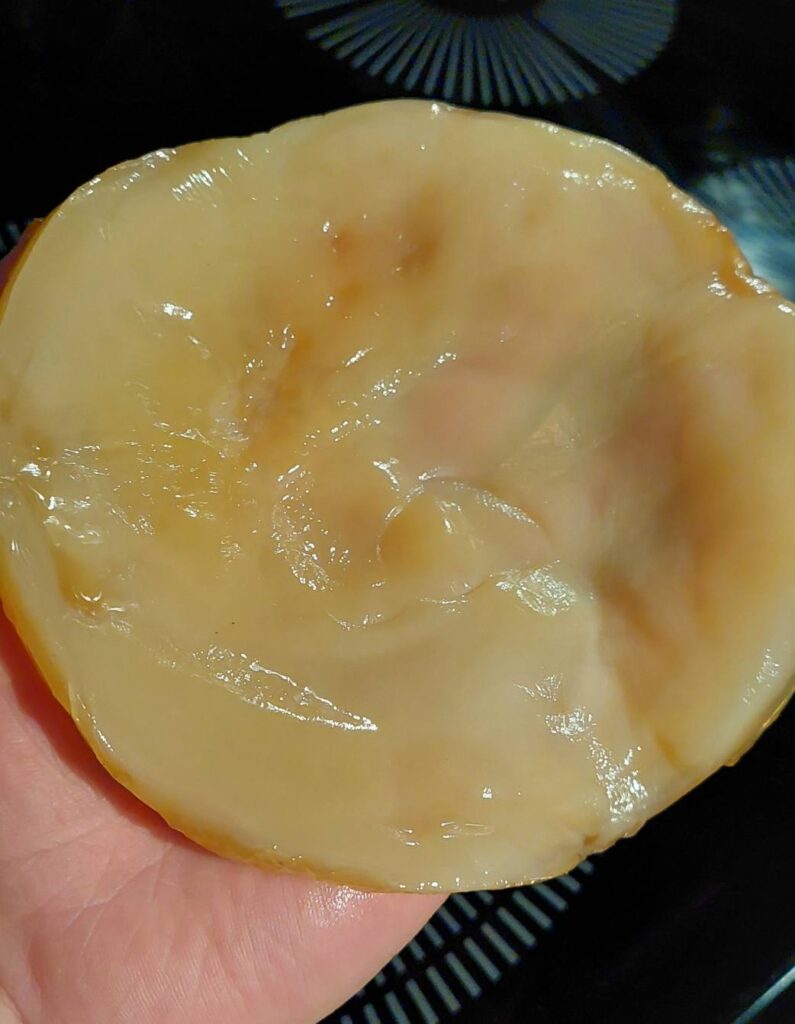Your cart is currently empty!


Scoby Have Types?
For kombucha brewers, it’s no secret that a successful brew of kombucha is partly the result of using a high quality scoby culture. For many novice kombucha brewers and those who are just starting out, congrats! You are taking a step towards the art of home brewing.
What do brewers look for when they choose a scoby culture to use to ferment their vessel of sweet tea for first fermentation (F1)? There are a few factors to consider:
How quickly a freshly made batch of sweet tea ferments during the first fermentation. Temperature often plays a critical role in the speed of fermentation, where cold temperatures lead to slower fermentation and warm temperatures result in quicker ferments. Of course proper temperatures between around 75 and 85 degrees Fahrenheit are ideal for proper fermentation. However, did you know there are specific types of scoby that encourage quicker fermentation? More on that below.
How quickly the kombucha becomes acidic over time. It should only take a few days for the pH of a brewer’s F1 vessel to drop, however it is recommended to wait between 5 and 10 days for the appropriate pH reading between less than 4.3 and greater than 2.5 (using a pH strip daily helps with this step). There are even scoby that have an influence on the acidic profile of kombucha.
What flavor the brewer is aiming for such as sweet or tart, in combination with the type of tea being used. Black tea works well with creating a strong fruity taste, whereas green tea compliments the complexity of herbal brews. The longer a brew sits during F1, the more tart and acidic it will become. There are scoby that work better for type of flavor being brewed.
Will children or adults prefer it? Is kombucha a beverage that only adults should drink? While the alcoholic profile typically sits less than 0.5%, it is very much acceptable to be consumed by kids and adults alike! While adults may be fine consuming more than a cup of ‘buch daily, it’s advised to limit children to no more than a cup a day; this is due to the acidic and probiotic nature of kombucha that acts as a detox for the body, so therefore it is wise to treat it like a health tonic; extraordinarily healthy in a small to moderate amount, but wise not to over-consume.
That last consideration about children and ‘buch really is something to ponder! We will discuss a few different kinds of scoby in a moment, but first, a word on physical characteristics. When it comes to how a scoby looks, unfortunately, there aren’t any good indicators to differentiate the type of scoby used. Most scoby look the same, and yet they take on different shapes and patterns. Really, besides being told from where the brewer received the scoby, the only other sign is how quickly the brewer notices the first fermentation starts to taste vinegary.
Homegrown/Vintage and Heirloom Scoby
The first type is homegrown. Either made by the brewer themselves or by receiving one from another individual. The most noticeable feature is that this type is not grown from a store-bought bottle. There is nothing like the feeling of growing your own scoby, because to us it’s like a little pet! Or at least I (Brewmaster Ryan) think so anyway; I named my first one Scoby Doo. Anybody else think that’s just hilarious?
Anyway, homegrown tends to be made raw, unpasteurized, and hopefully organic if the brewer cares enough about keeping their scoby inside the fermenting kombucha vessel in the best state of health. This type of scoby is an all-around great pick and works very well with many unflavored types of tea such as black, green, and oolong. The pale, round, jelly-like substance a scoby is, is also known as a vintage or “mother”. The pellicle that forms after several days of first fermentation above the scoby is also called a heirloom or “child”. The more you know!
A homegrown scoby has the shortest fermentation time of the types and has an average fermentation time of 7 to 15 days in a 1-gallon jar. It also flavors a decent balance between tart and sweet, depending on how the brewer is flavoring their ‘buch. This is actually the type that we use at Bucha Bros, LLC. We find it very versatile and easy to use for our craft brews.
Scoby Grown from Store Bought Kombucha
The next type is store bought. Store bought kombucha has a tendency to be filtered and pasteurized, with additives and yeast-inhibitors. If a brewer buys a store-bought bottle of kombucha and tries growing a scoby themselves from that, the results can be unpredictable and may not come out the way the brewer expects. Despite getting it from the store and from a major label brand, self-making a scoby from that tea to begin with won’t yield the same taste. Therefore we personally don’t recommend trying to make a scoby from a store-bought kombucha tea (unless you’re a seasoned veteran brewer and know what you’re doing). However it is still important to have it here so you know that is another option people have done with their brews.
Tibetan Scoby
These next two types of scoby we have not heard of until recently, but are fascinated to check them out. The first being Tibetan scoby. As the name suggests, this scoby originates from Tibet; who would’ve guessed! It pairs very well with the earthy tasting tea puerh, a type of black tea originally stored underground in caves. It’s also said that children are fond of kombucha made using this particular kind of scoby; not sure how that statistic were made!
Tibetan scoby can ferment for far longer than a homegrown scoby without turning into vinegar. That means more opportunity for producing good probiotics in the brew. Maybe I can get my little niece and nephew to try some!
California Girl
The last scoby type to discuss is California Girl. Originating from kombucha bought on tap at Sanibel Island, Florida, which is ironic for a scoby named California Girl. This type of scoby is said to be smooth and well-balanced, most often brewed using oolong tea. It’s said that the California Girl takes the longest out of all the scoby types to ferment, so it’s important to take note of that when considering which type is best to use for your next brew.
How to Grow a Scoby
How exactly do you make a “do it yourself” scoby from nothing? It’s a rather simple process. It all starts with some starter liquid from a previous batch of kombucha, if you can get your hands on some, about 2 cups is needed. Put that in a glass jar with a breathable cloth or coffee filter covering the top. Now let that sit for 28-35 days at temperatures between 75 and 85 degrees Fahrenheit, and a half-inch pellicle will form. This scoby and starter tea liquid can be used for a new batch of kombucha. It’s a bit of a waiting game, but you save a little money.
Final Thoughts
We’ll be honest with you, dear reader. We’ve gone through a number of homegrown scoby. We’ve had several successfully developed scoby that remained healthy and became so thick we had to shave off layers of pellicles, resulting in wonderfully sweet and tangy brews. But we’ve also lost a number of scoby due to conditions both our fault and out of our control. Lessons were learned; simple trial and error. We will come out with a guide on caring for your own scoby in the future. We’ve grown and evolved quite a bit these past few months of production and we’d like to say thank you for coming on this journey with us so far.
No matter what kind of scoby you try to brew kombucha with, we at Bucha Bros, LLC hope you find success! It may come the first time, or it may come the third or fifth time. There is nothing more special than sharing the joy of our craft with you. Thanks for reading!
